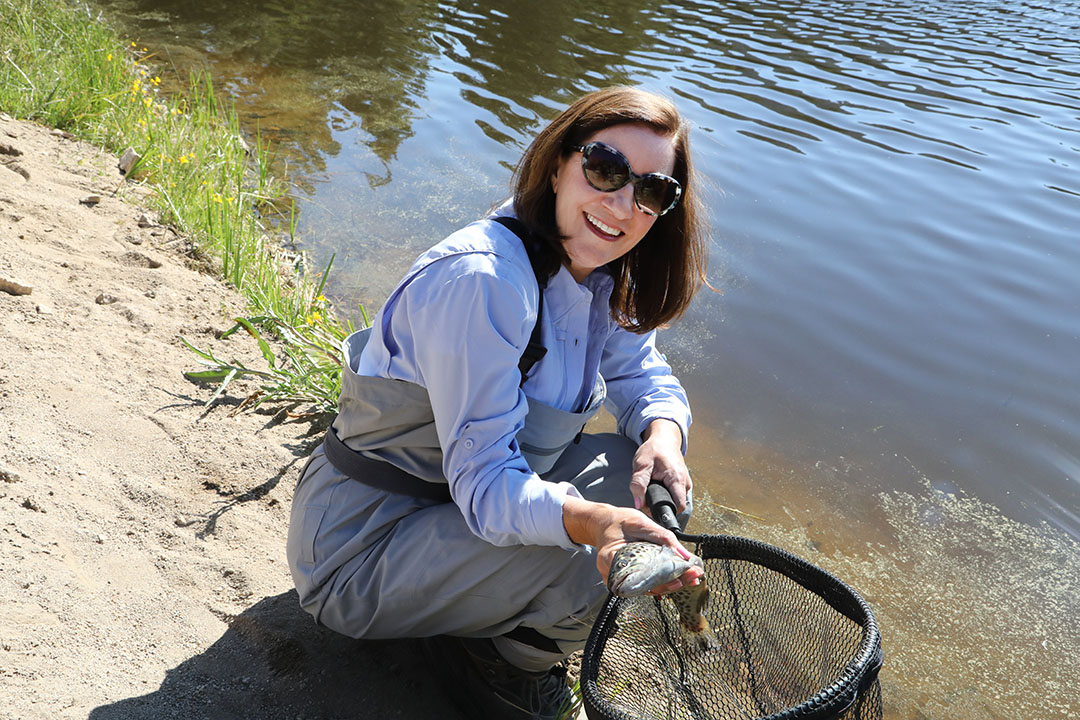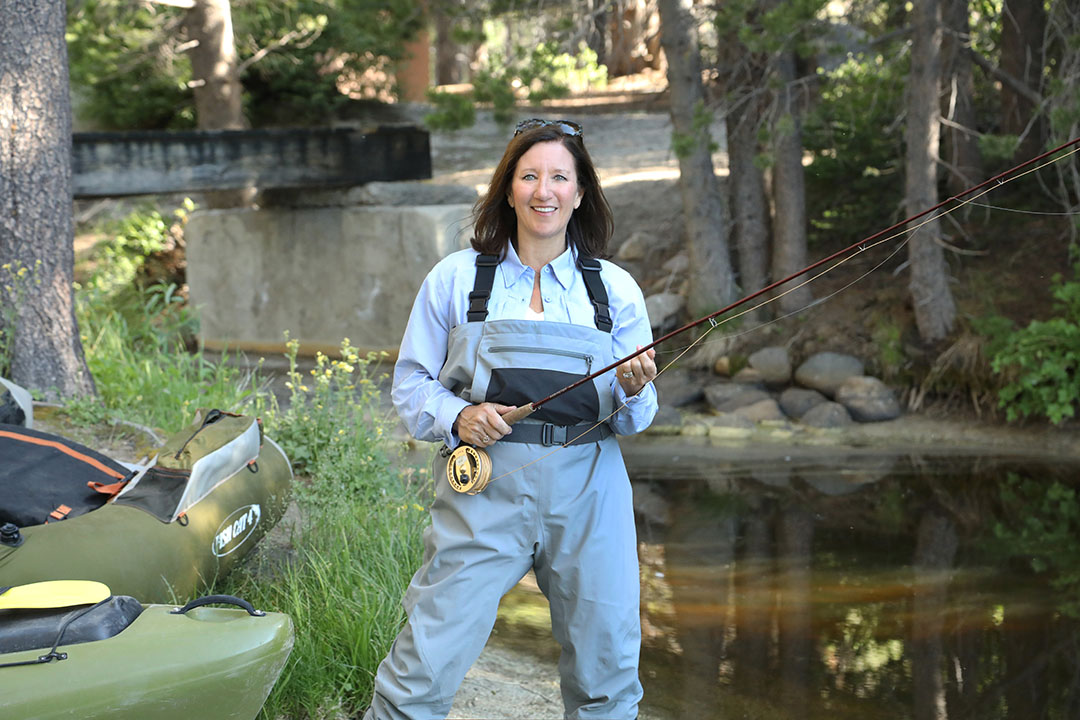Local women share how hunting is critical for our ecosystem.
Sportsmen. Huntsmen. They’re terms that have been used for centuries, but they need some updating. After all, when it comes to this vital element of managing our lands, gendered terms really have no place.
While the majority of hunters used to be male, that has changed in recent years. According to a National Geographic article from 2013 titled “More Women Give Hunting a Shot,” the number of women who hunt increased by 25 percent between 2006 and 2011. The United States Fish and Wildlife Service reported in 2016 that just 10 percent of all hunters were women. And that number has since grown even more, so that women comprise almost half of today’s hunters.
In charge of most domestic decisions already, women are taking up bows, arrows, and sports rifles and bringing home the … well, much more than just bacon. They’re also doing their part to protect the environment.
That’s right. Hunting can be good for our ecosystem, according to two local female hunting advocates who are among the increasing number of women hunters. But they also refer to themselves by another word: conservationists.
This is because at the heart of most hunters, of any gender, is the desire to keep wildlife and habitats thriving and to feed their families by their own hands.
Hunting is used as a management tool for the vast amount of wildlife calling Nevada home, and it’s a way to protect the region’s biodiversity. Resource controls set by the Nevada Department of Wildlife allow elk, deer, sage grouse, and other wildlife to regroup, birth, and regrow horns without humans intruding.
Without seasonal hunting tags allocated based on annual land surveys by NDOW — a facet of population control — and the hunters who garner them, Nevada’s bountiful animal population could starve.
Conservationism
In 2017, Nevada Governor Brian Sandoval appointed Tiffany East as NDOW’s first female sportsman commissioner. After serving two consecutive terms, she’s found new levels of respect for all the department’s leaders who work to maintain a healthy habitat for Nevada’s wildlife.
East has been a hunter for as long as she can remember, beginning as a young girl accompanying her parents on food-finding expeditions for their family of seven.

She remembers her first childhood hunting success story, decades ago, as if it was yesterday. While hunting with her father, she cleanly shot a buck. For East, who was one of five children and the only girl who hunted, this was one of many special moments in the field spent with her dad. She says he went on nearly every hunt with her until he passed in 2000.
Her parents instilled in her the intrinsic food-based value of hunting, something East says is being understood more widely today as the local food movement and conscious efforts to know where our nourishment comes from exponentially increase.
East explains that 80 percent of Nevada’s land is under the U.S. Bureau of Land Management’s purview, and that hunting is about managing wildlife and improving the habitat for all species, not just game. It’s also about integrity, ethics, tags, and quotas, she says.
True conservationists have a desire to protect these majestic animals.
Prior to stricter regulation of ethical hunting by NDOW, some hunters would disturbingly harass animals, such as elk, in the wild to get them to drop their racks from the stress, East explains.
“Learning more about conservation and wildlife is really important, even if you’re not a game eater… When you get an overabundance [of wildlife] … the landscape can only handle so much,” East says. “Sportsmen have been the ones funding conservation for more than 80 years; we are kind of the original stewards of the land.”
East is grateful for her time as NDOW’s commissioner.
“I have a greater understanding of the resource we’re managing, the resource available to our sportsmen,” East says. “Though I’ve always had an appreciation for it, it’s just a richer, deeper appreciation.”
And how does it feel to successfully hunt down an 800-pound beast that will feed your family for months?
“It’s fear, it’s elation, it’s knowing that you killed something, and it’s not to be taken lightly,” she says.
A Pretty One
When she was 12, conservationist Betsy Caron cleanly shot her first antelope in the final days of hunting season. Elated, she’d finally accomplished what she’d failed to do on many other occasions while hunting with her parents.
Judi and Tom Caron are both lovers of the outdoors and conservationists who hunted to feed their family of three; they instilled in their daughter a deep respect for wildlife.
Betsy’s earliest memory of conservationism is that of taking hunter safety classes with her father, when the game warden spoke of the “edge effect,” which refers to the consequence of placing two contrasting ecosystems adjacent to one another. Excessive hunting causes edge effect. She says it’s important to make sure that the right number of animals are in the right area, so Nevada’s animals don’t get diseases from overpopulation and have enough food and water to consume. She said a realization came to her then.
“We don’t just hunt for food; we hunt so animals themselves have enough land, food, and water to survive,” she says.
She doesn’t look like the average hunter, Caron admits, explaining that she likes to get gussied up and often dresses in feminine attire and full makeup while saddled with her firearm on a hunt.
Once, Caron, then age 30, and her father, plus about 15 men were sitting around getting to know each other over adult beverages before the hunt. Her father’s friend asked her what kind of elk she wanted — a six-point elk, perhaps?
She replied, “A pretty one!”
Then she witnessed all the men, in unison, spit out their beers, speechless and in hysterics.
“I mean, I want a big one,” she clarified. “But I want one that’s pretty, that’s mature. I’m not going to kill a young elk, because you want the genes to be passed on, but I want one that’s pretty, unique.”
After three weeks, she got her pretty one, the day before the season closed.
Hunting provides a deep sense of camaraderie between Caron, her parents, and their friends. She loves going on expeditions with her parents, her dad being her best friend. Throughout her life, she’d go scouting with her father in rural Nevada, once following two bucks through the wilderness, in awe of their beauty and grace — a memory she says is one of her fondest.
She rejects the term “sportsman” and prefers the term conservationist, explaining that she doesn’t believe hunting is a sport; it’s not about scoring the biggest buck or bull. She believes people should hunt to conserve wildlife and to yield their own food.
Nothing is more organic than harvesting an animal whose lifelong sustenance is provided by nature, she says.
Bigger animals are optimal targets for conservationists, because they’re older and at the end of their lives. Given the choice of legally shooting a larger elk versus a smaller one, she chooses the larger one as she believes it’s more humane for her to harvest it cleanly, rather than having it die after breaking a leg or sustaining a mountain lion attack, for example.
For novices interested in hunting, Caron says the hunter safety courses required to get a license are essential. Learning gun safety is critical before embarking on a hunt. Her father was a professional trap shooter who taught her, “It’s not the gun, it’s the nut behind the butt.”
Caron, her family, and their friends eat every bit of what they harvest. Whatever is left over, they share.
“It’s all about being conservative of the resources that we have,” Caron says. “What people don’t realize is that we are encroaching on [the animals’] habitat, so if we don’t maintain their habitat and our habitat at the same time, these wild animals could pass on diseases to our domesticated animals, and then our whole ecosystem is out of whack. So it’s about checks and balances.”
The animals were here before us. Conservationists in the Reno-Tahoe area enable the circle of life and help future generations experience these wild creatures in their natural habitat. Land surveyors and NDOW assist with these efforts by determining the land’s carrying capacity and allotting more hunting tags, for instance, if food for wildlife is scarce.
Hunting is more than a sport. It’s a way to preserve life in its many forms as well as wildlife habitats, so they can continue to inspire and educate us humans.
Native Nevadan Natasha Bourlin grew up in once-rural Callahan Ranch. She was often late for school due to herds of wildlife preventing departure from her home. She loves game meat and learning about the many positive aspects of hunting.
RESOURCES:
Nevada Department of Wildlife: Ndow.org
For details about outdoor education courses: Ndow.org/learn-discover/outdoor-education
For details about acquiring hunting tags: Ndow.org/apply-buy/apply-buy-hunting


